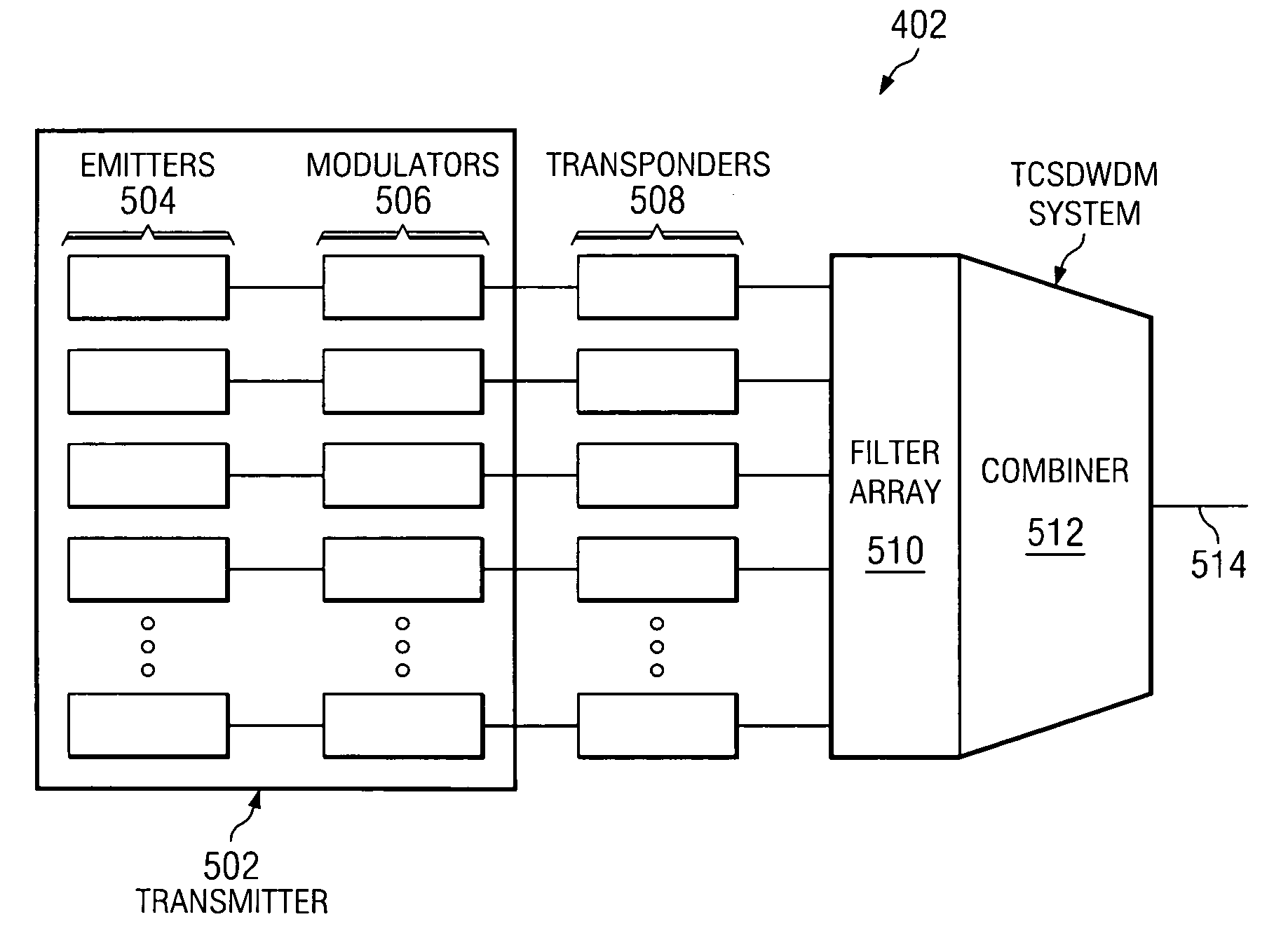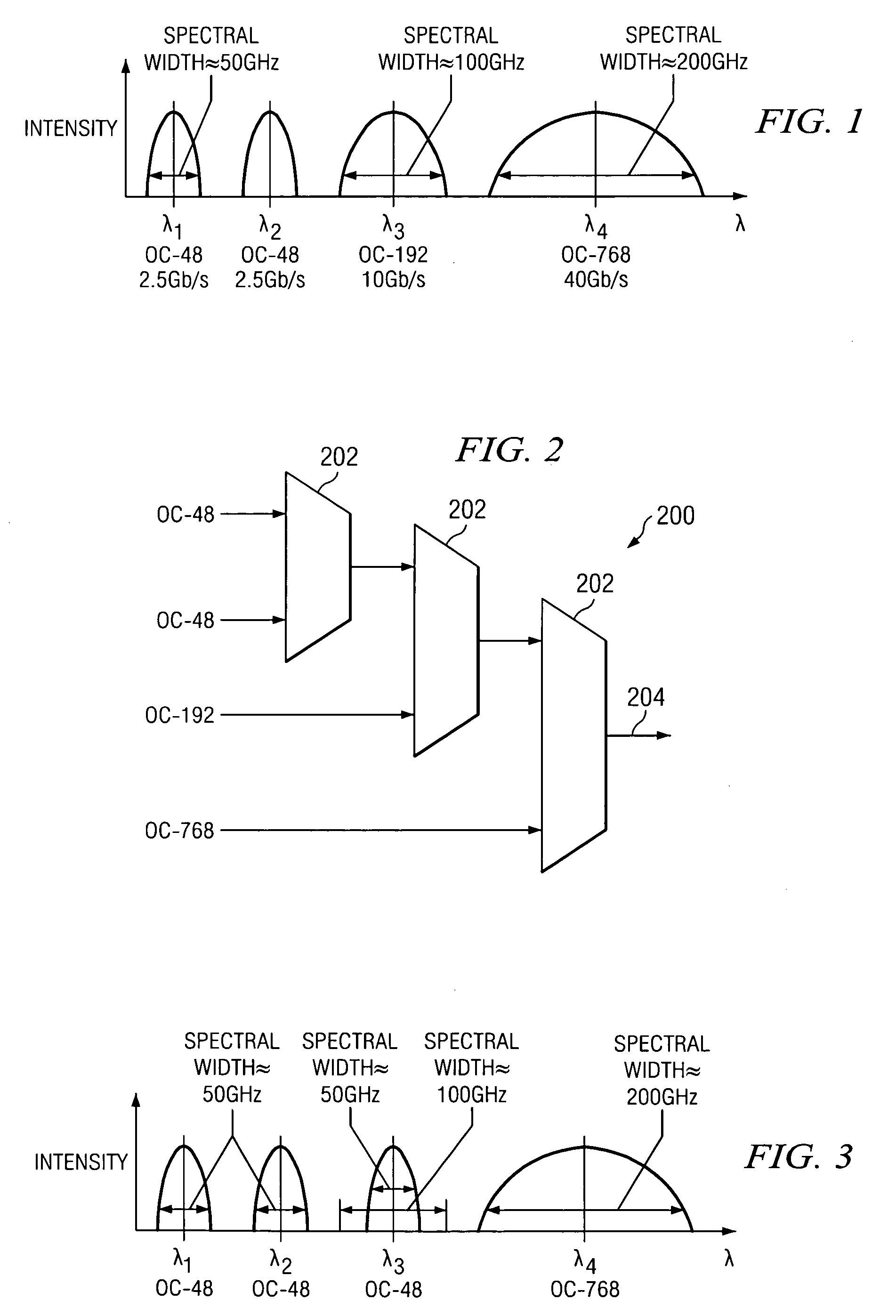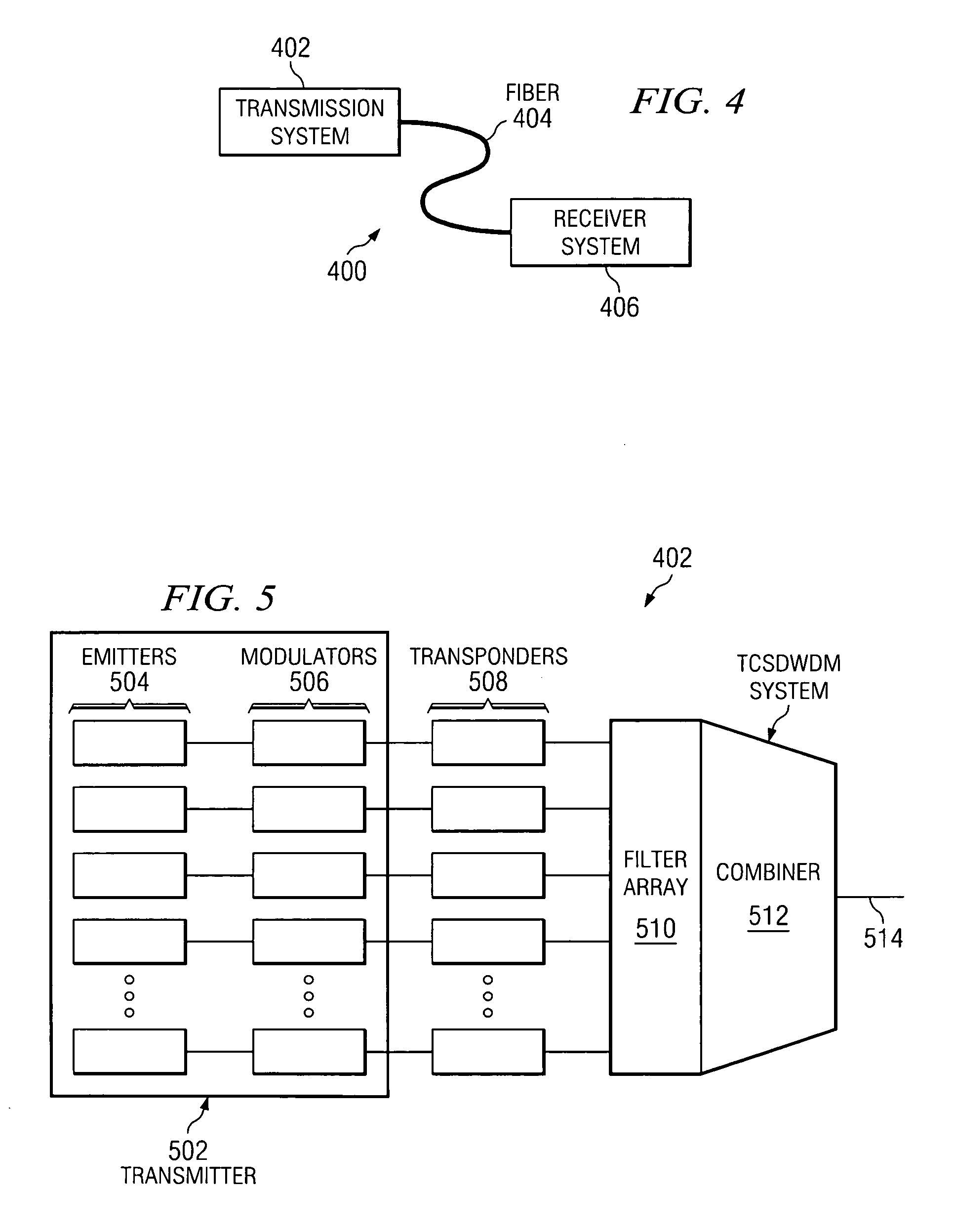Transport system with tunable channel spacing DWDM
a technology of optical transport and channel spacing, applied in the field of optical transport systems, can solve the problems of limiting consumer and business access to the bandwidth of the various transmission media used to transport information, hardware used cannot allow channel spacing to be varied, and each channel in the dwdm system can only accommodate bit rates, so as to reduce fiber waste
- Summary
- Abstract
- Description
- Claims
- Application Information
AI Technical Summary
Benefits of technology
Problems solved by technology
Method used
Image
Examples
Embodiment Construction
[0034]The numerous innovative teachings of the present application will be described with particular reference to the presently preferred embodiment (by way of example, and not of limitation).
[0035]The optical transport system 400 of the preferred embodiment consists of a transmission system 402, a transmission medium 404, and a receiver system 406, as shown in FIG. 4. The transmission system 402, detailed in FIG. 5, includes the transmitter 502 consisting of several emitters 504 each emitting a carrier signal tuned to a channel central wavelength. This signal is intensity modulated, for instance, by a Mach-Zender interferometer. The modulation alters the intensity of the carrier signal by constructive and destructive interference through the interferometer to encode the information signal onto the carrier, so that after modulation the emitted light contains the data to be transmitted. Modulating more data onto a channel increases the bandwidth requirement for that channel. For exam...
PUM
 Login to View More
Login to View More Abstract
Description
Claims
Application Information
 Login to View More
Login to View More - R&D
- Intellectual Property
- Life Sciences
- Materials
- Tech Scout
- Unparalleled Data Quality
- Higher Quality Content
- 60% Fewer Hallucinations
Browse by: Latest US Patents, China's latest patents, Technical Efficacy Thesaurus, Application Domain, Technology Topic, Popular Technical Reports.
© 2025 PatSnap. All rights reserved.Legal|Privacy policy|Modern Slavery Act Transparency Statement|Sitemap|About US| Contact US: help@patsnap.com



